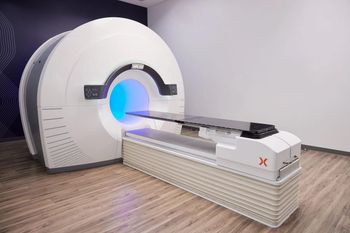
CAD/PACS integration promises diagnostic help
Two new studies predict that computer-aided diagnosis schemes will likely be incorporated into PACS in the future.
Two new studies predict that computer-aided diagnosis schemes will likely be incorporated into PACS in the future.
One paper (Comput Med Imaging Graph 2007 Mar. 7 [Epub ahead of print]) presents the current status of CAD and its future potential in a PACS environment. CAD is not to be confused with automated computer diagnosis, a concept based on computer algorithms only. With CAD, radiologists use computer output as a second opinion and aid in making final decisions.
"I believe CAD will become a standard of care for diagnostic examinations in daily clinical work," said Kunio Doi, Ph.D., director of Kurt Rossmann Laboratories for Radiologic Image Research at the University of Chicago.
CAD computer performance is complementary to radiologists' actions, not necessarily comparable or better, Doi said.
Doi predicts that CAD schemes could be assembled as packages and implemented as a part of PACS. A package for chest CAD, for example, may include the computerized detection of lung nodules, interstitial opacities, cardiomegaly, vertebral fractures, and interval changes in chest radiographs, as well as computerized classification of benign and malignant nodules and differential diagnosis of interstitial lung diseases, he said.
"In order to assist in differential diagnosis, it would be possible to search PACS and retrieve images with known pathology, once a reliable method is developed for quantifying the similarity of a pair of images," Doi said.
While many CAD applications, including commercial and research systems, have been developed, integration with PACS is less extensive, hindering the use of CAD in clinical environments.
The second paper (Comput Med Imaging Graph 2007 Mar. 24 [Epub ahead of print]) reports a CAD/PACS integration toolkit designed to integrate CAD results with clinical PACS.
The toolkit is a software package with two versions:
- DICOM-SC (Secondary Capture)
- DICOM-IHE (Integrating the Healthcare Enterprise)
The first uses the DICOM secondary capture object model to convert the screen shot of CAD results to a DICOM image file for PACS workstations to display. The second converts CAD results to a DICOM structured report based on IHE workflow profiles.
"The DICOM-SC method is simple and easy to implement, since it does not have the ability for further data mining of CAD results, while the DICOM-IHE version can be used for data mining of CAD results in the future but is more complicated to implement," said Dr. Zheng Zhou of the Image Processing and Informatics Laboratory at the University of Southern California.
Newsletter
Stay at the forefront of radiology with the Diagnostic Imaging newsletter, delivering the latest news, clinical insights, and imaging advancements for today’s radiologists.




























